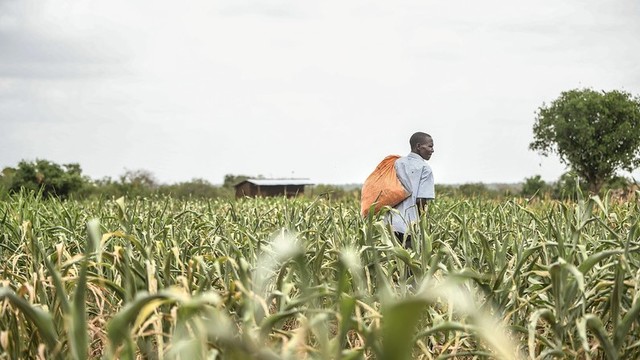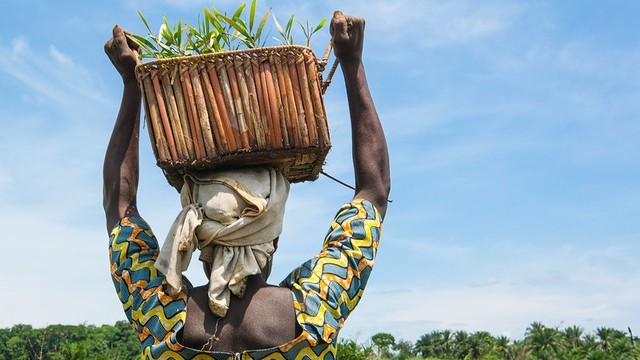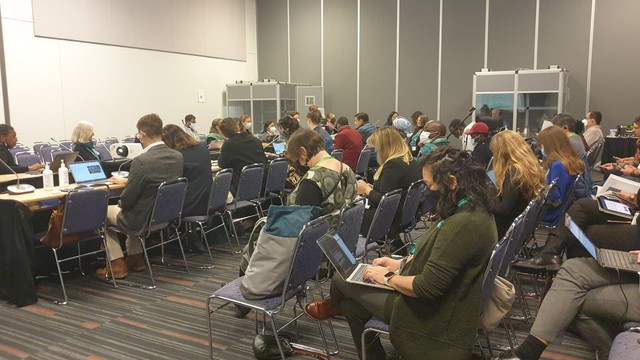Lessons from East Africa: getting climate and conservation funding to Indigenous Peoples and local communities
Learning from Maliasili's Maasai Landscape Conservation Fund’s first three years of providing grants to local organisations in Kenya and Tanzania can inform the design of other funding mechanisms to support Indigenous Peoples and other local communities' conservation and natural resource management efforts in Africa and beyond.



Maasai of Ngorongoro, Tanzania (Photo: David Denicolò, via Flickr, CC BY-NC-ND 2.0)
Although global efforts to combat climate change and biodiversity loss increasingly recognise the central role played by Indigenous Peoples and other local communities (IP and LCs) in safeguarding forests and other carbon-rich ecosystems, climate and biodiversity funding practices largely exclude or bypass Indigenous and local community actors. Addressing this challenge is a key priority for mitigating climate change and halting global biodiversity loss.
Locally-led conservation needs investment
The savannah rangelands in southern Kenya and northern Tanzania are one of the world’s most spectacular landscapes for Indigenous cultures, wildlife and nature. And here, a range of grassroots organisations and national civil society alliances – such as the Kenya Wildlife Conservancies Association – play a key role in developing effective approaches to community-led ecosystem management and restoration.
But to strengthen and scale up their work to sustain the tremendous economic and environmental values these rangeland ecosystems possess, these organisations need more appropriate investment.
To address this need, Maliasili first piloted the Maasai Landscape Conservation Fund (MLCF) in 2020 as a grantmaking mechanism to direct more funding to leading local natural resource-focused organisations in the region to support their long-term visions, priorities, and organisational growth.
MLCF: catalysing investment in grassroots conservation leaders
A pooled fund, MLCF uses grantmaking capital from a small group of US-based, mid-size private philanthropies that have a strong interest in African conservation and community-based approaches.
The fund aims to promote collaboration between funders seeking to direct greater resources to local community-based conservation work while also reducing the transaction costs of managing multiple mid-size or small grants to local organisations.
Since mid-2020, it has provided about US$2.1 million in grants to eight leading local community-based conservation organisations, including a core portfolio of five long-term Maliasili partners. Here, we summarise four main lessons from these experiences, illustrating them with examples from MLCF grantees.
Key lessons
1. Base grants on local organisations’ priorities and needs: MLCF explicitly aligns with grantees’ own priorities, as expressed in their strategic plans. As these locally-owned strategies reflect the critical conservation and land management priorities within a local landscape, it is vital that they guide community-level investments.
MLCF has granted the South Rift Association of Land Owners (SORALO) $280,000 over the past two years to support Maasai group ranches in Kenya’s Kajiado District to convert their legal land titles as required by the Community Land Act.
The SORALO strategic plan 2018-2023 identified this work as crucial for strengthening the long-term tenure security of communal lands in the face of potential subdivision and fragmentation. The MLCF funding enabled SORALO to develop its own internal methodology for facilitating community lands registration and creating the governance structures required by the Community Land Act.
To date, SORALO has registered three group ranches, totalling 114,500 hectares. It has also stepped up engagement with county and national government bodies to increase support for community land governance processes as a key priority.
2. Invest in impacts, not outputs: MLCF grant-reporting frameworks focus on capturing core achievements and impacts, rather than specific outputs or deliverables.
Working to strengthen community wildlife management areas (WMAs) in northern Tanzania, MLCF grantee Honeyguide’s annual goals and priorities include increasing WMA income, ensuring strong local wildlife and natural resource protection, and strengthening WMA management and governance capacity.
By structuring its grants around these goals and priorities, and giving Honeyguide wide discretion and flexibility on how it allocates resources across different sites and activities, MLCF has contributed effectively to an impressive set of community-level outcomes.
3. Take a flexible and responsive approach: MLCF grantmaking responds to local needs and realities, not external timelines. When SORALO was faced with a government deadline for registering community lands, MLCF quickly approved a new grant to provide additional resources over a short period.
In the nearby Maasai Mara landscape, MLCF supported the Maasai Mara Wildlife Conservancies Association to address identified needs around strengthening local conservancy governance structures, while also providing flexibility around which conservancies received the support and when they received it.
This approach enabled local organisations to respond adaptively and strategically to challenges and opportunities, which was particularly important during the COVID-19 pandemic.
4. Invest in organisational capacity: Reflecting Maliasili’s wider mission in supporting local and community-based organisations, MLCF provides financial and non-financial investments in local organisations’ internal capacity. This includes budget guidance that encourages organisations to allocate resources to core costs and capacity – such as staffing and other infrastructure – and organisational development support to strengthen communications, fundraising, management and governance, which helps position grantees for future growth.
For example, SORALO has nearly doubled its overall budget since 2019 by investing in fundraising and communication, and expanding its network of funders, positioning it for greater reach and impact.
Looking forward
MLCF’s experiences over the past three years provide a case study for funding mechanisms on how to support the growth and expanded impact of effective local IP and LC conservation organisations.
As more funding mechanisms are created to channel funding to such grassroots organisations, it will be crucial to ensure they truly support local priorities, provide flexible and enabling funding, and invest in community organisations’ long-term capacity.
Accelerating progress in this area is key to expanding resources to address climate change and biodiversity loss in 2023 and beyond.



